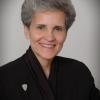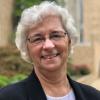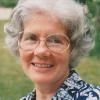See for Yourself - Besides being an iconic actor, Jack Lemmon is also a philosopher of sorts. Although others sometimes get the credit, it was Jack Lemmon who said, “If you’ve been successful in your chosen path, then sending the elevator back down is your obligation.”
Sr. Mary Ann Walsh, a quiet nun with a keen wit who led a very public life as a journalist and a longtime spokeswoman for the U.S. Conference of Catholic Bishops, died on Tuesday after a tough battle with cancer. She was 67 and died after five days in a hospice in Albany next to the regional convent of the Sisters of Mercy, the religious order she entered as a 17-year-old novice in 1964.
Mercy Sr. Karen Schneider stepped off a two-passenger plane in the middle of the jungle and walked into a malaria epidemic. It was 1995, and sickened Amerindian people, who populate this small South American country's interior, lined the floor of a two-room clinic. A 15-year-old boy died a few hours after she arrived. Schneider, at the time a fourth-year medical student at the State University of New York Health Science Center at Brooklyn, had never seen a case of malaria before. "It was my own personal first disaster. It was me and easily 60 or 70 patients, and here I was a fourth-year medical student," Schneider said. "But nobody else died." Twenty years later, she's still saving lives here.
Three Stats and a Map - Yesterday, the United States Supreme Court heard arguments in what’s being called an historic and high-stakes case regarding same-sex marriage. Being argued is the constitutionality of state-level gay marriage bans – basically, can a state impose a ban against same-sex marriages, and if a state does have a same-sex marriage ban, is it obligated to recognize a same-sex marriage performed in a different state where such a union is legal?
GSR Today - People of faith and good will have recognized this fundamental violation of nature and have been engaging in efforts to eliminate nuclear weapons ever since the atomic bombs were dropped. Some have spent years in prison for their actions of nonviolent resistance. Sr. Megan Rice, a member of the Society of the Holy Child Jesus, is incarcerated now.
As Global Sisters Report celebrates our one-year anniversary, we are also celebrating the connections we have made with sisters in Africa. While in Kenya in January, I ran two writing workshops for more than 100 sisters. Here are three more short essays from the sisters who participated. You can read more of sisters' work from these sessions here at the Writing Workshop series page.
As I visit with some of the internally displaced people of Iraq, I am reminded of one of the characteristics that St. Dominic made a part of Dominican life – that of itinerancy, traveling from place to place.
Many different kinds of peace lines still crisscross Belfast city and suburbs. Even now, 15 years into the Northern Ireland peace process, these walls show little sign of coming down. While politicians occasionally raise the question of removing them, dialogue at the local level has not succeeded in promoting the mutual trust necessary to overcome cross-community nervousness. A whole generation of people born and raised practically next door to each other have never met or socialized together. And so many still have misgivings about dismantling the trappings of deadly past hostility. Living on such an interface continues to be challenging.
During nearly 60 years in the Little Company of Mary, Kathleen Keane has traveled extensively, initially as a missionary nurse in southern Africa. She holds a bachelor’s degree in English and psychology and a master’s degree in women’s studies. While living on a peace line in Northern Ireland she studied bioethical aspects of healthcare and gained a master of philosophy degree from Queen’s University, Belfast. Now retired, she lives in a large Dublin community.
Dominican Sr. Trish Madigan has spent most of her life studying interfaith and intercultural relationships. She’s currently the director of the Dominican Centre for Interfaith Ministry, Education and Research in Sydney, Australia – and before that, she spent 15 years as the director of the Sydney archdiocese’s office of ecumenical and interfaith relations. Madigan has a doctorate in Arabic and Islamic studies from the University of Sydney, and she’s written extensively on the lives of Muslim and Catholic women, including the 2011 text Women and Fundamentalism in Islam and Catholicism. This month, Madigan chatted with Global Sisters Report about the importance of interfaith dialogue and women in religious traditions.





